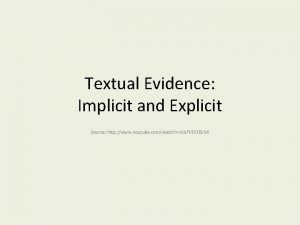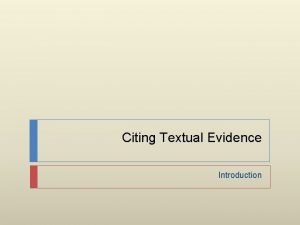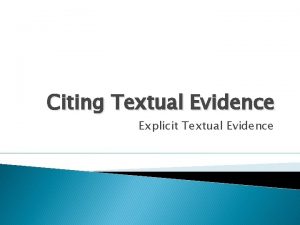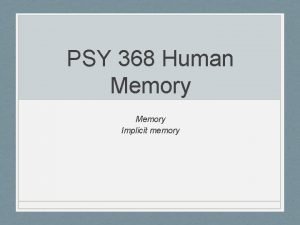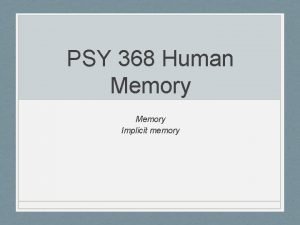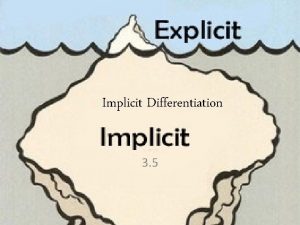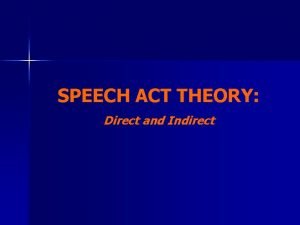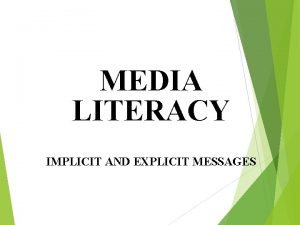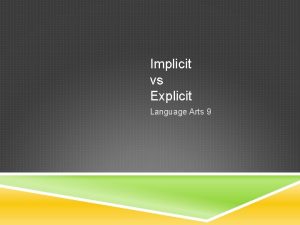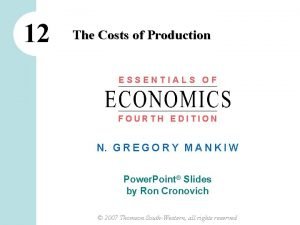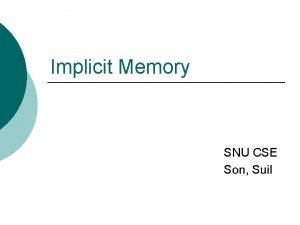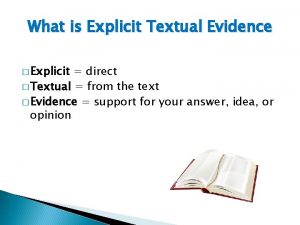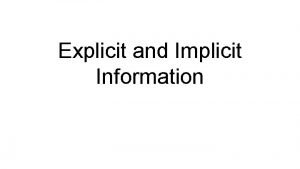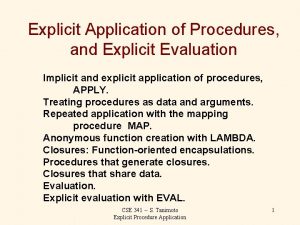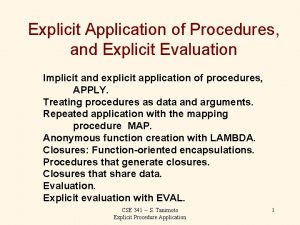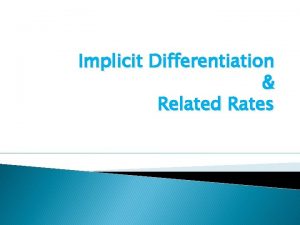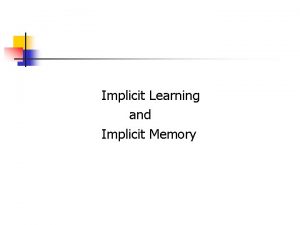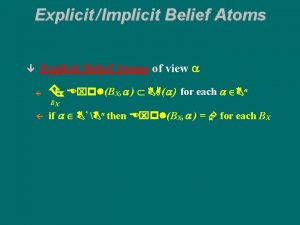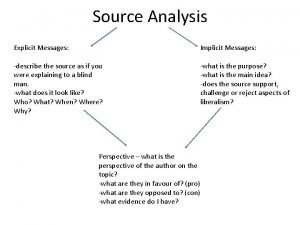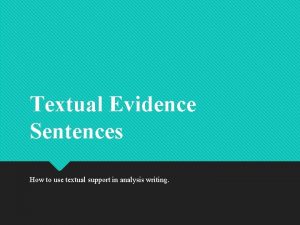Textual Evidence Implicit and Explicit Source http www













- Slides: 13

Textual Evidence: Implicit and Explicit Source: http: //www. youtube. com/watch? v=1 b 7 V 7 x. TBLG 4

What is the text really saying? • Some things we read will be explicit, or stated directly. There won’t be much guess work. – “We don’t want anyone going who’ll panic at the first shot. Six Safari leaders were killed last year, and a dozen hunters. ” (Bradbury, “A Sound of Thunder”) – This is explicit. The character, Travis, is stating exactly what he means. He doesn’t want anyone who’ll panic immediately.

Explicit: • “Alice was beginning to get very tired of sitting by her sister on the bank, and of having nothing to do: once or twice she had peeped into the book her sister was reading, but it had no pictures or conversations in it, and what is the use of a book, thought Alice, without pictures or conversation? ” (Carroll, Alice’s Adventures in Wonderland)

• Some things are more implicit. They are not directly stated. We have to guess (or infer) what is being implied. • Imply: to express or indicate something without directly stating it • Infer: to guess, speculate, or conclude from evidence and your own prior knowledge

Implicit: • “Are you really going to wear that? ” (Maybe it doesn’t look good. Maybe it’s inappropriate. ) • “Are you sure you want to do that? ” (Maybe it’s not a good idea. )

Implicit: • “Though possessed of half a dozen hats, it took him some time to find one, then there was a hunt for the key, which was at last discovered in his pocket…” (Alcott, Little Women) • What’s happening? What can we infer about the character?

• Evidence: – He has six hats but still can’t find one. – He can’t find his key, even though it’s in his pocket. • Conclusion: – He is disorganized.

• “Eckels swayed on the padded seat, his face pale, his jaw stiff. He felt the trembling in his arms…” (Bradbury, “A Sound of Thunder”) • Evidence: Eckels looks pale and his jaw is tense. • Conclusion: Eckels is very anxious.

Another difference: • Explicit messages are clear. It’s hard to misinterpret them. • Implicit messages may mean different things to different people, depending on background and culture. – We can interpret pieces of literature differently because we have different life experiences.

Assignment: • Write a paragraph about someone, real or imagined, that makes us infer something about their situation and how they feel. • If you need to, write your conclusion first, then come up with evidence and put it into paragraph form.

Example paragraph: • The alarm sounded, and Maddie looked at the clock and groaned. She tripped over a pile of laundry and textbooks as she climbed out of bed and headed to the coffee maker. She glanced at herself in the mirror and frowned at the bags under her eyes, then at the backpack by the door, stuffed with notebooks, pens, and study guides. “There is not enough coffee on earth to get me through this day, ” she muttered.

Close Reading • A close reading is a careful and purposeful reading of a text • It requires – rereading a text, sometimes several times – making notes and summarizing in the margins

Annotating • Annotate: to comment on, to explain in writing – in English class: to make notes in the margins and within the text itself • We copied a chart of useful annotation symbols. Not every symbol will be used in everything we read.
 Explicit textual evidence
Explicit textual evidence Citing textual evidence examples
Citing textual evidence examples Explicit textual evidence means
Explicit textual evidence means Implicit and explicit memory
Implicit and explicit memory Explicit and implicit memory
Explicit and implicit memory Implicit memory
Implicit memory Explicit vs implicit differentiation
Explicit vs implicit differentiation Implicit cost
Implicit cost How many type of sentence
How many type of sentence Implicit message examples
Implicit message examples An implicit detail is a
An implicit detail is a Implicit and explicit cost
Implicit and explicit cost Fungsi eksplisit dan implisit
Fungsi eksplisit dan implisit Implicit vs explicit memory
Implicit vs explicit memory
